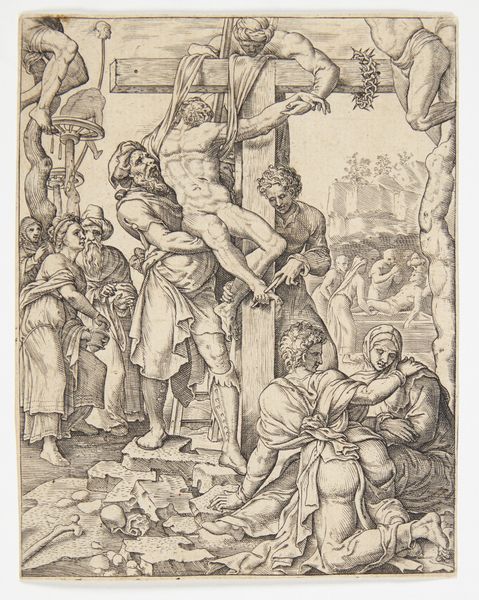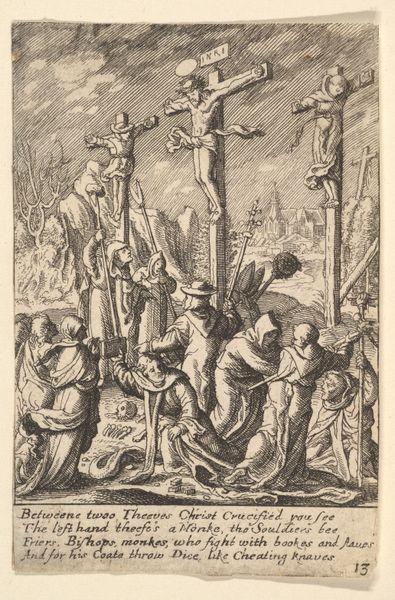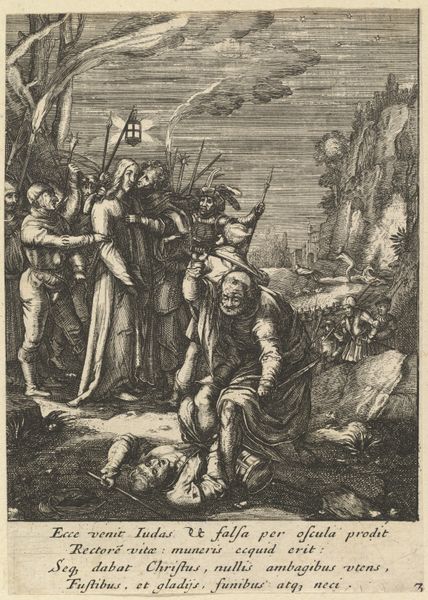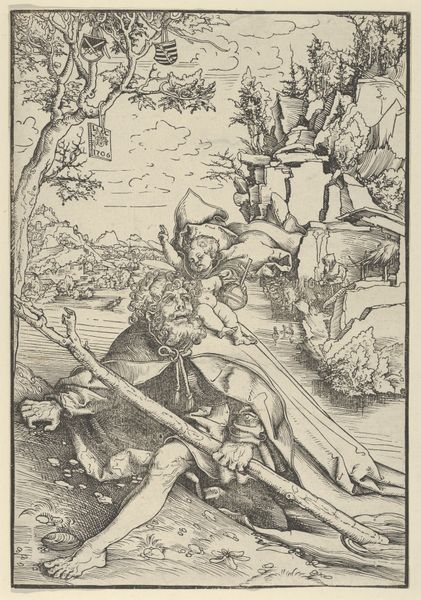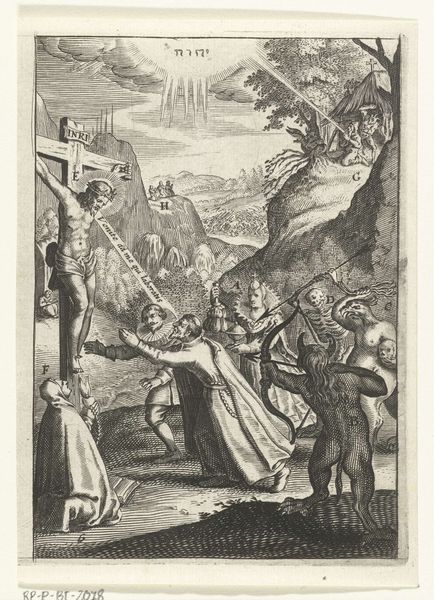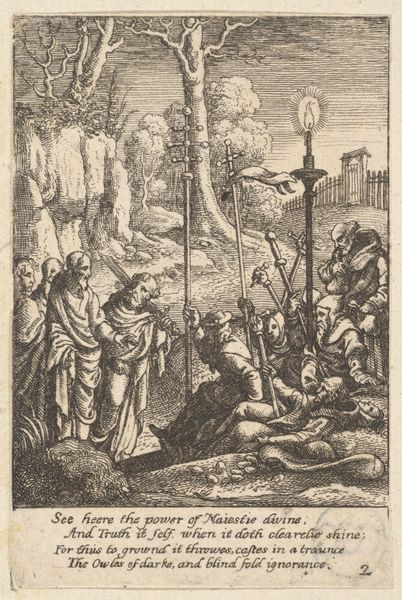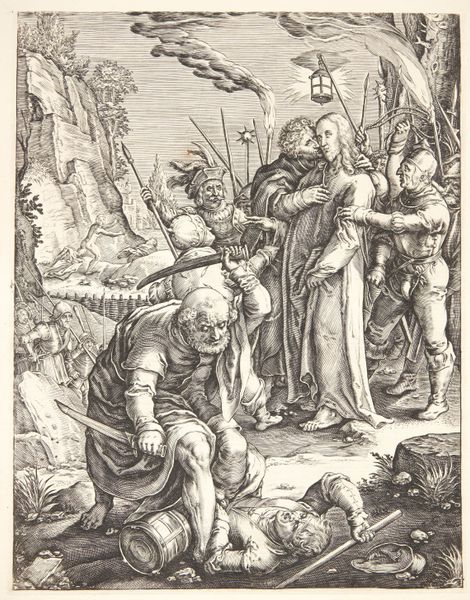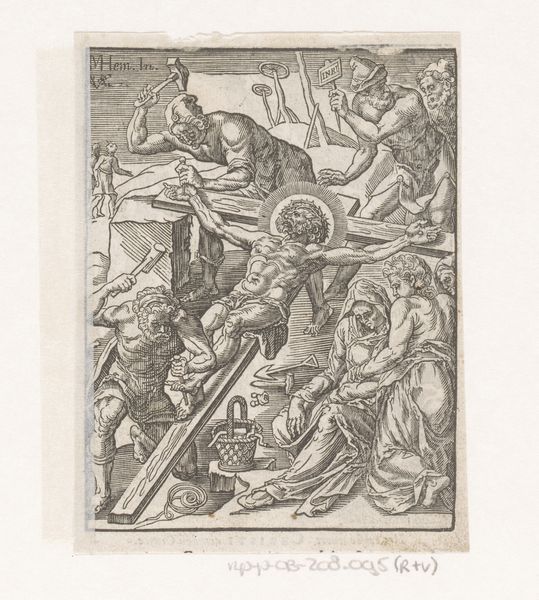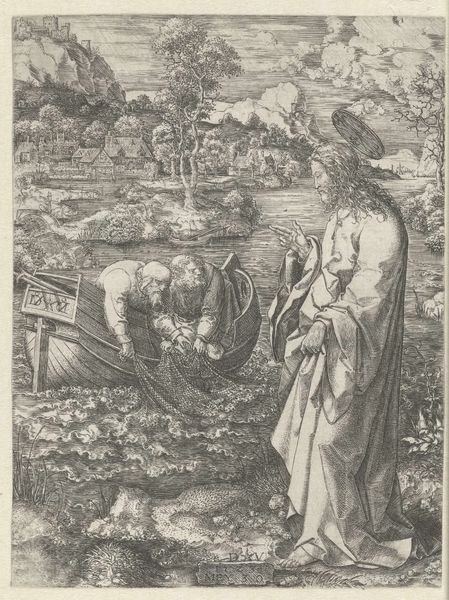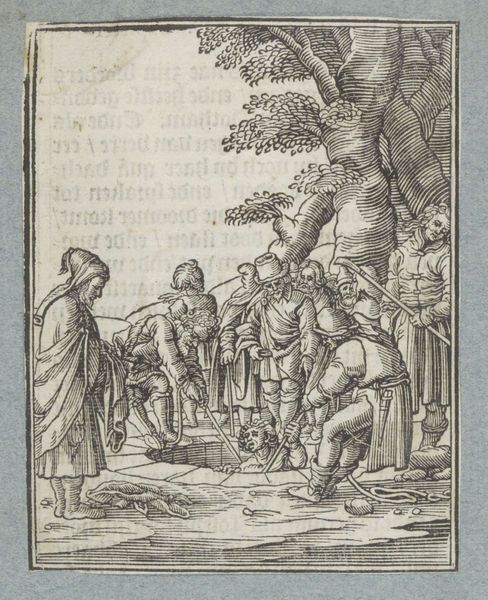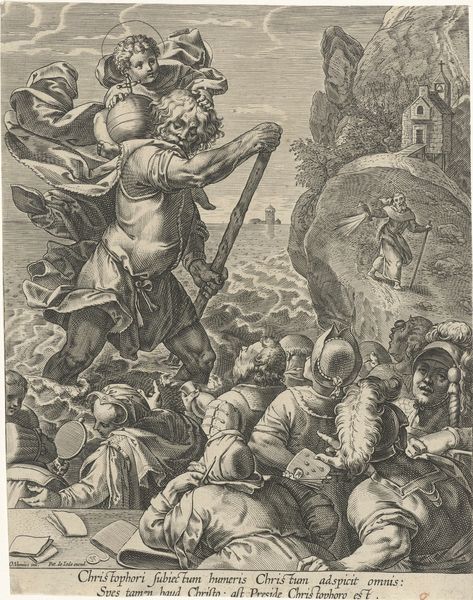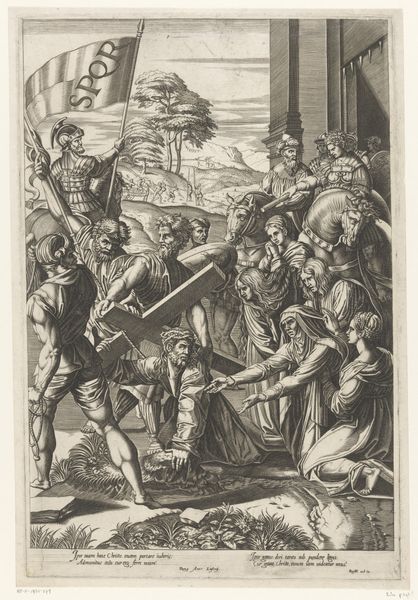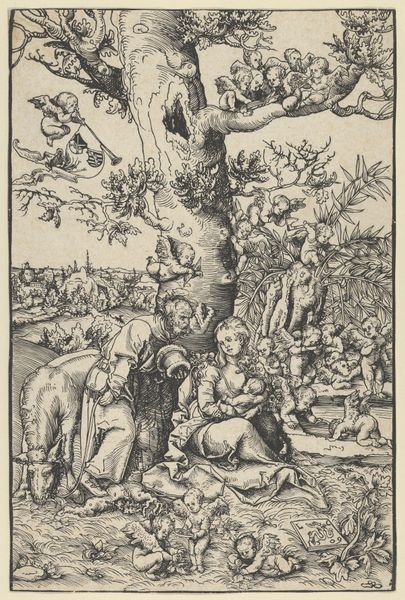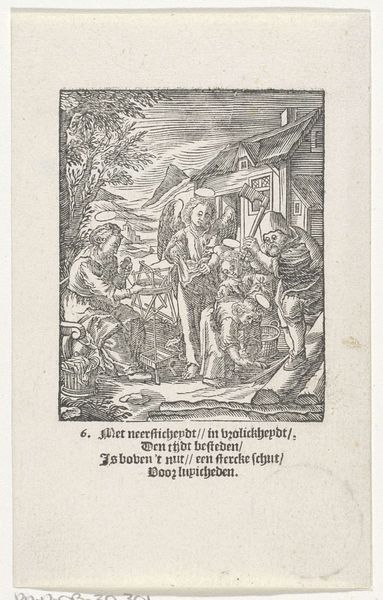
Christus aan het kruis met bezwijmende Maria en andere heiligen 1545 - 1577
0:00
0:00
print, engraving
# print
#
landscape
#
mannerism
#
figuration
#
history-painting
#
engraving
Dimensions: height 297 mm, width 208 mm
Copyright: Rijks Museum: Open Domain
Curator: "Christus aan het kruis met bezwijmende Maria en andere heiligen," a print made by Pieter Huys, sometime between 1545 and 1577. Look at this scene. The sheer emotional weight of the moment seems almost unbearable. Editor: It's very dramatic, isn't it? The swooning figures at the foot of the cross contrast with the stark, almost detached landscape. What’s your reading of the work? Curator: I see this print as deeply entrenched in the socio-political tensions of its time. The overt display of religious suffering becomes a vehicle to reinforce certain power dynamics. Consider the hyper-emotionality of Mary and the other women. How might this representation of grief function within a patriarchal framework, and who is legitimizing this? Editor: That’s interesting! I hadn’t really thought about it in terms of gendered power before. So you are suggesting that this isn’t just about religious devotion, but something else? Curator: Exactly. Remember, the Mannerist style often employed exaggerated emotions and distorted forms. What is the impact of portraying religious figures, particularly female ones, as being overwhelmed? Who controls and uses this interpretation? Does it open up pathways of empathy and shared suffering? Or are those who embrace faith deemed emotional or lacking logic? These representations played a crucial role in shaping and reinforcing social hierarchies. Also note the skull in the lower left corner. How does that add to your understanding? Editor: Oh, yes! I noticed it, of course. Symbol of death, of mortality, right? The finality of existence...but from your perspective, what questions about our mortality does this provoke, how it can be used by religious and political power systems? Curator: It encourages us to think about how symbols of mortality have been employed to shape and control narratives, influencing individual behavior, and, more broadly, societal values within this historical context. And note, the text written on the stone plaque further underscores that same intention to define guilt and redemption, so the viewer doesn’t interpret their individual existence but does it on God's grace only, rather than through self-actualization, or some other perspective outside this paradigm. Editor: I see what you mean. Thinking about it in that light definitely adds another layer to how I view this piece. I thought the work was all about the emotional scene depicted, and less of the power relationships underlying its reception! Thank you. Curator: It's been a pleasure! These works ask important questions, that are often far from what one imagines on the first view.
Comments
No comments
Be the first to comment and join the conversation on the ultimate creative platform.
